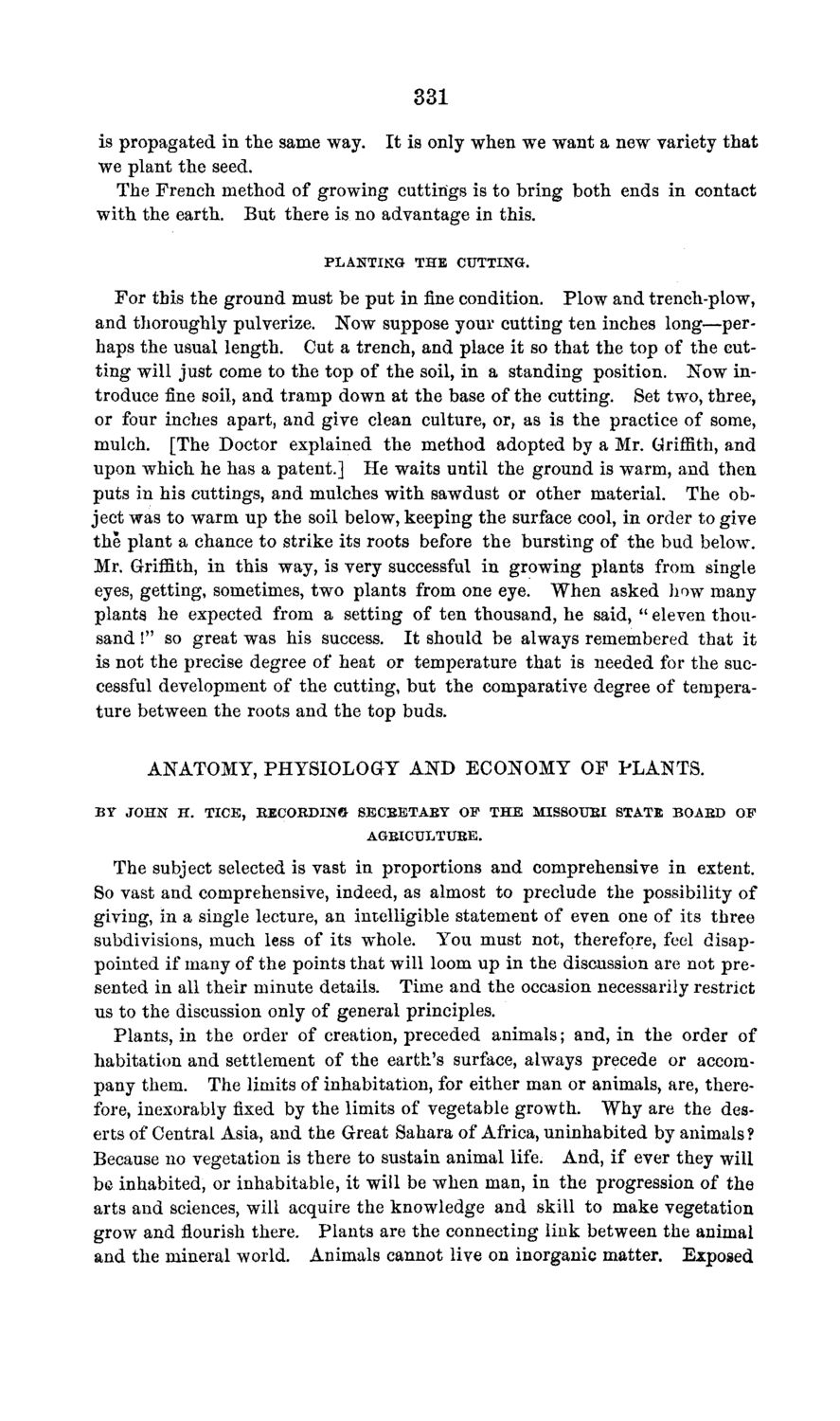| |
| |
Caption: Board of Trustees Minutes - 1869
This is a reduced-resolution page image for fast online browsing.

EXTRACTED TEXT FROM PAGE:
331 is propagated in the same way. It is only when wTe want a new variety that we plant the seed. The French method of growing cuttings is to bring both ends in contact with the earth. But there is no advantage in this. P L A N T I N G T H E CUTTING. For this the ground must be put in fine condition. Plow and trench-plow, and thoroughly pulverize. Now suppose your cutting ten inches long—perhaps the usual length. Cut a trench, and place it so that the top of the cutting will just come to the top of the soil, in a standing position. Now introduce fine soil, and tramp down at the base of the cutting. Set two, three, or four inches apart, and give clean culture, or, as is the practice of some, mulch. [The Doctor explained the method adopted by a Mr. Griffith, and upon which he has a patent.] He waits until the ground is warm, and then puts in his cuttings, and mulches with sawdust or other material. The object was to warm up the soil below, keeping the surface cool, in order to give the plant a chance to strike its roots before the bursting of the bud below. Mr. Griffith, in this way, is very successful in growing plants from single eyes, getting, sometimes, two plants from one eye. When asked how many plants he expected from a setting of ten thousand, he said, " eleven thousand !" so great was his success. It should be always remembered that it is not the precise degree of heat or temperature that is needed for the successful development of the cutting, but the comparative degree of temperature between the roots and the top buds. ANATOMY, PHYSIOLOGY AND ECONOMY OF PLANTS. BY J O H N H . T I C E , E E C O R D I N & SECBETABY O F T H E MISSOURI STATE BOAED O F AGEICULTUEE. The subject selected is vast in proportions and comprehensive in extent. So vast and comprehensive, indeed, as almost to preclude the possibility of giving, in a single lecture, an intelligible statement of even one of its three subdivisions, much less of its whole. You must not, therefore, feel disappointed if many of the points that will loom up in the discussion are not presented in all their minute details. Time and the occasion necessarily restrict us to the discussion only of general principles. Plants, in the order of creation, preceded animals; and, in the order of habitation and settlement of the earth's surface, always precede or accompany them. The limits of inhabitation, for either man or animals, are, therefore, inexorably fixed by the limits of vegetable growth. Why are the deserts of Central Asia, and the Great Sahara of Africa, uninhabited by animals? Because no vegetation is there to sustain animal life. And, if ever they will be inhabited, or inhabitable, it will be when man, in the progression of the arts and sciences, will acquire the knowledge and skill to make vegetation grow and flourish there. Plants are the connecting link between the animal and the mineral world. Animals cannot live on inorganic matter. Exposed
| |